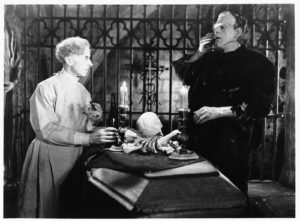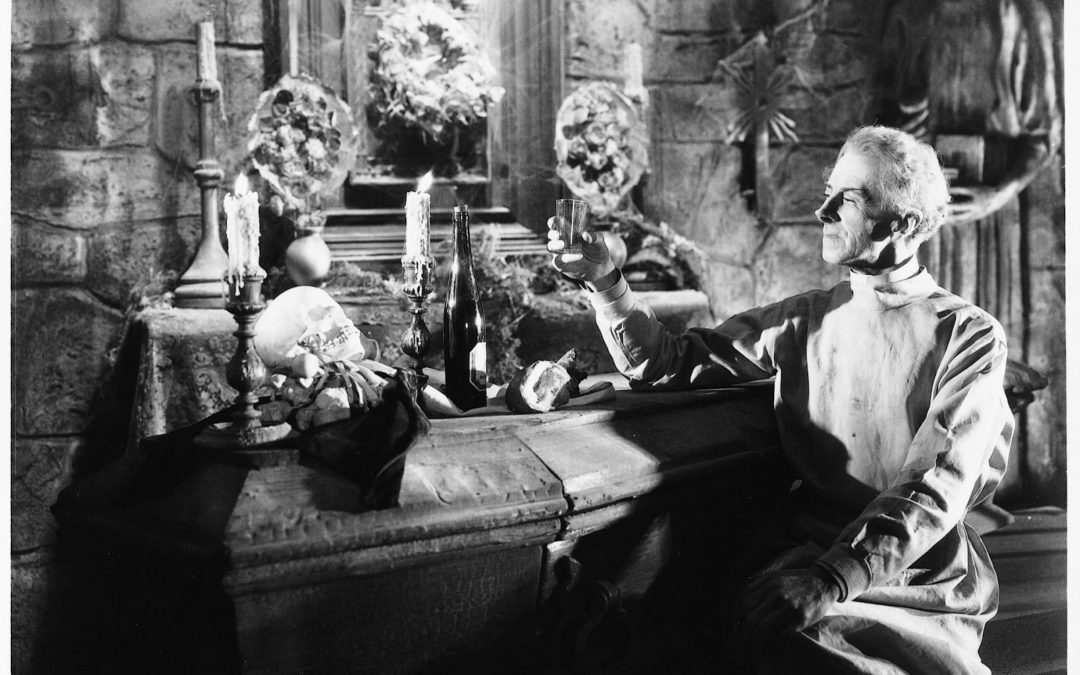The Bride of Frankenstein is a sequel to Whale’s Frankenstein. It was received as a horror film and was generally highly regarded by critics. But on close viewing, it’s a screwball comedy—a campy hodgepodge of satire that Whale and screenwriters William Hurlbut and John Balderston foisted on a public eager for more Boris Karloff’s portrayal of the Monster.
The screenplay draws on many Frankenstein sources but notably introduces the Monster’s Bride and Dr. Septimus Pretorius, a campy effeminate mad scientist with a smirk. He’s a former university teacher planning to inveigle his former student Henry Frankenstein into creating a mate for the Monster.
After a long hard day in his laboratory, situated in a crypt, Pretorius sets a picnic dinner on a sarcophagus. He’s hoping for peaceful enjoyment but is momentarily surprised when the Monster intrudes on his privacy.
Always cool, Pretorius nonchalantly says, “Oh. I thought l was alone. Good evening,” and smoothly begins cultivating a friendship. When the Monster asks for Smoke, he says, “Smoke. Friend?” Pretorius says, “Yes, I hope so. Have a cigar. They are my only weakness.” Without hesitation, the Monster gratefully accepts, and when it’s lighted and puffed, he’s mighty pleased.

Dr. Pretorius (Ernst Thesiger) hosts the Monster (Boris Karloff).
Shelley’s Monster may have been a vegetarian, but Whale’s Monster grabs most of a roast chicken and stuffs it into his mouth. Chomping chicken and gulping wine, he says to Pretorius, “Good, good.”
The cast: Boris Karloff as the Monster; Ernest Thesiger as Dr. Septimus Pretorius; Elsa Lancaster as the Bride of Frankenstein; Colin Clive as Henry Frankenstein
See James Whale. The Bride of Frankenstein (1935). Screenplay by William Hurlbut and John Balderston is based on Mary Shelley’s novel 1818. James Whale. Frankenstein (1931). Screenplay by Francis Edward Faragoh and Garret Fort based on Peggy Webling’s play (1927), adapted by John L. Balderston

